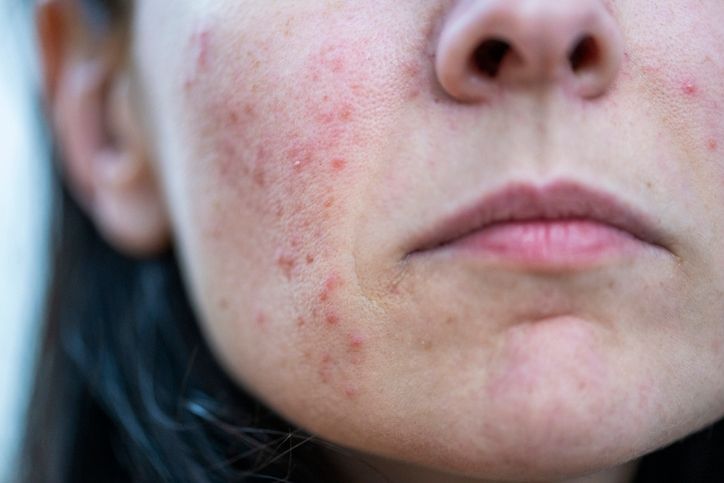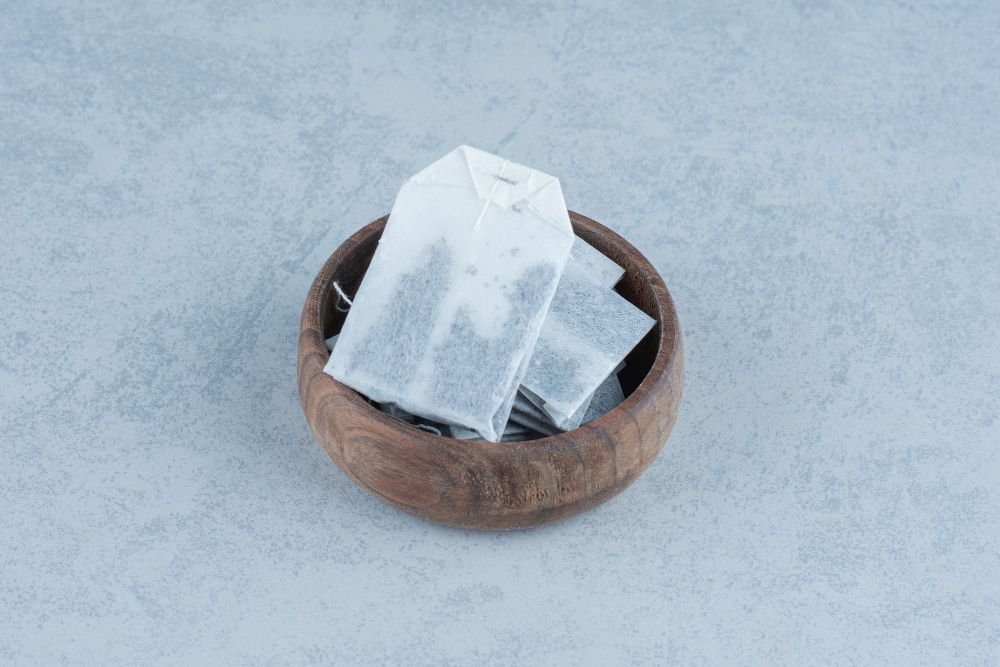
Book Now to Experience
PicoCure Pigmentation Removal Treatment
1 Minute Self-Registration
Date should not be before minimal date
Author: Sophia Man|Updated: 23 July 2024
No one wants hyperpigmentation. These colored splashes are non-flattering and too eye-catching, taking away attention from your perfect makeup or outfit of the day. What's more, not all hyperpigmentations are born equal, and most hyperpigmentation treatments have their limitations (except one, perhaps?). If you want to get rid of your pigmentations—we have good news! Our tips can help you determine your types of pigmented spots and their most appropriate treatments. Most importantly, you will learn to tell if your dark spots require medical attention, so that you don't miss your time window for getting much-needed medical help!

1
What does Hyperpigmentation Look Like?
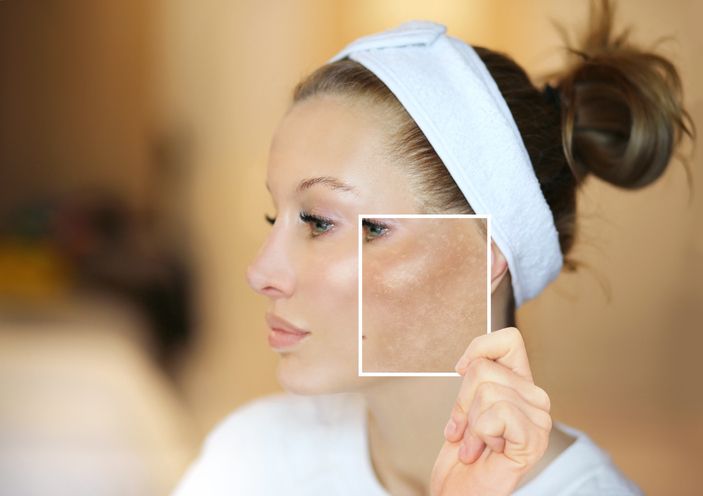
Also known as dark spots, brown spots, and more, hyperpigmentation are areas of skin that appear darker than your usual skin tone. The sizes of pigmented lesions can range from dots to over half of the face. Most hyperpigmentations are brown, black, ashy green, greyish blue, or grey, with some being red or pink. As a side note, pigmented lesions lighter than the original skin color are hypopigmentation.
Besides discolorations, pigmented lesions can also make your skin texture uneven, as the areas can feel rough, bumpy, wrinkled, or tender compared to the surrounding skin.

2
How is Hyperpigmentation Formed?
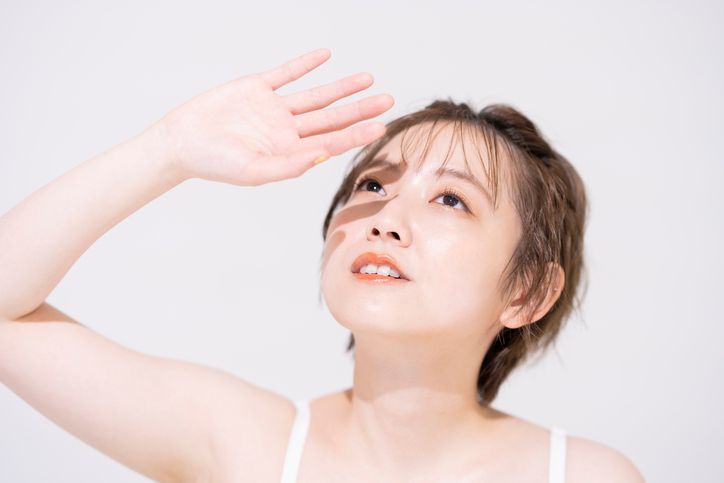
Our skin cells, called melanocytes, produce ink particles called melanin. It gives your skin its color—more melanin means darker skin tones. Melanin protects the skin from UV damage, which is why people from warmer climates (i.e., African, South American, and Southeast Asian) have darker skin pigmentation and hair colors.
Skin cells produce melanin per 2 days. Your genetics determine how much melanin is produced. However, long-term UV ray exposure, aging, hormonal changes (due to pregnancy, stress, and more), food choices, and inflammation can increase melanin production.
With excessive melanin, your metabolism cannot expel the extra melanin fast enough, leaving it to accumulate within the skin tissues, resulting in hyperpigmentation over time. Hyperpigmentation can occur on your entire body, though those on the face are often the most troublesome.
Read More

3
Why Should I Worry About My Pigmented Spots?
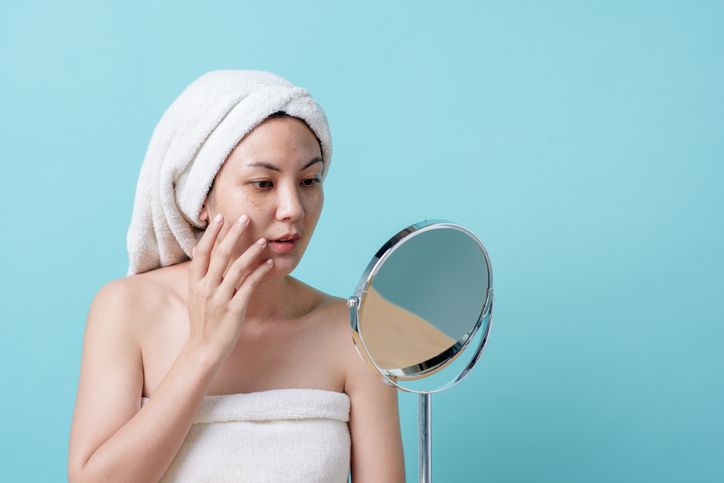
Besides aesthetic concerns, knowing the types of your hyperpigmentation helps to identify the actions you should take to better care for your skin. In addition, some pigmented lesions actually hint at more serious medical issues.

4
A Simple Guide to 6 Common Hyperpigmentation and Their Causes
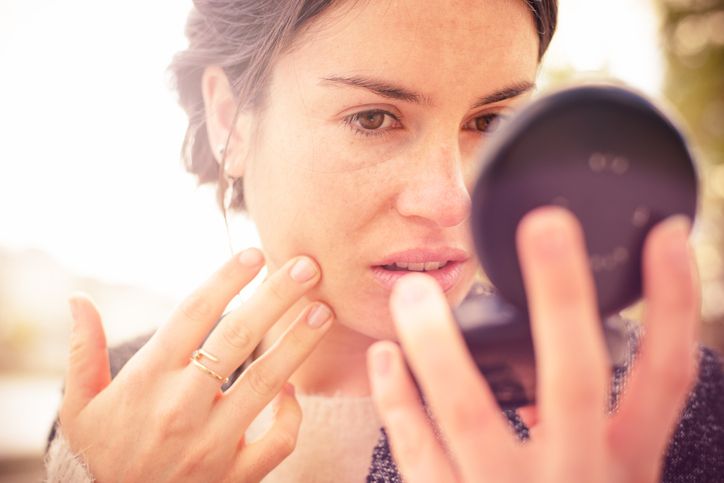
Identifying your hyperpigmentation types is beneficial for picking the most suitable treatment. For example, gentler treatments should suffice for mild/small/shallow spots, while dark/large/deep spots may require advanced treatments such as pico laser.
Freckles
Freckles are inherited and often show since childhood. Freckles can range from beige-like to dark brown. Freckles look like tiny dust particles scattered across your cheekbones and nose bridge, though some people have them all over the face. Freckles are located on your outer epidermal layer.
Acne Scars (Post-Inflammatory Hyperpigmentation)
Popping acne creates a wound that can become inflamed. Inflammation triggers excess melanin production, resulting in acne blemishes.
Acne marks are usually deep red or darker than the surrounding skin; they can be flat or textured. Most acne marks are relatively small. However, using tweezers and needles to pop your acne will result in larger and even indented scars.
Light acne blemishes are relatively shallow on your epidermis, while the textured ones are deep within your dermis.
Sun Spots / Age Spots (Liver Spots, Solar Lentigines)
Aging and sun exposure are unavoidable. Sunspots are also called age spots: they can appear at the earliest in your 30s and most likely in your 50s. Sun exposure increase melanin production and the aging process. Pollution, smoking, drinking, and bad eating habits can also age your skin faster.
Sunspots are flat, smooth, and can be as big as a coin. Sunspots can range from beige to dark brown, and are usually at skin areas with frequent sun exposure, i.e., cheekbones, bridge, the tip of the nose, forehead, upper chest, and shoulders.
It is as common to find a cluster of sunspots as a lonesome one. Lighter sunspots are at the base of the epidermis, while darker ones could be located on top of the dermis.
Melasma (Chloasma, Hormonal Spots)
Melasma / hormonal spots are dubbed "pregnancy spots", as they are common among pregnant women and new mothers. However, melasma can also happen to women with significant hormonal fluctuation due to stress and medical conditions.
Epidermal melasma is dark brown with defined edges; dermal melasma can be beige or greyish blue and look cloudy—some melasma can be a mix of both.
Melasma is often dot-like to patch-like, flat, and in a cluster. Melasma can get darker and lighter depending on the climate. While it's not guaranteed, melasma can fade away within months.
Nevus of Ota (Oculodermal Melanocytosis)
Nevus of Ota is a skin condition most common among Asians, affecting about 0.025% of the Asian population, with over 90% of patients being women.
Nevus of Ota is usually at the outer dermal layers. Like a birthmark, most cases of nevus of Ota appear at birth, though some rare cases stem from significant hormonal changes (i.e., puberty, pregnancy, menopause).
Nevus of Ota is a splash of greyish-blue skin pigmentation on top of the trigeminal nerve of your face (i.e., eyes, nose, forehead, and cheek). Nevus of Ota can also appear on the eyeballs, making them look blue-dyed. Nevus of Ota usually occurs on only one side of the face.
Medication-Induced Skin Hyperpigmentation
Besides medical concerns, certain medications such as chemotherapy drugs, oral contraceptives, and prescription antibiotics can also cause pigmented lesions. These spots vary in shades, sizes, and depths and are mostly temporary.

Book Now to Experience
PicoCure Pigmentation Removal Treatment
1 Minute Self-Registration
Date should not be before minimal date

5
Beware: 3 Hyperpigmentation Types of Serious Medical Concerns
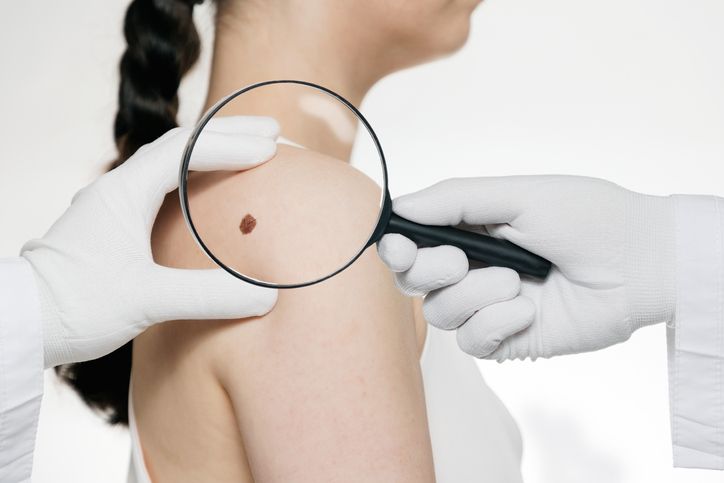
Pigmented lesions are mostly harmless. However, some do hint at underlying medical problems. If you suspect you have the following dark spot types, please don't hesitate to visit your dermatologist or family doctor.
Cancer Moles (Melanoma)
Melanoma is the deadliest type of skin cancer, taking away over 55,000 lives each year.
Melanoma often develops in the inner epidermal layers of your sun-exposed skin areas. The telltale signs are new/existing moles that look/become asymmetrical or have distorted borders.
Moles of melanoma are usually as large as your pinky nails; they are also uneven in colors and, most significantly, keep changing in size, colors, or shapes. You may also find these moles itchy, painful, or even bleeding.
Dark Spots Related to Other Medical Conditions
In general, you should visit a dermatologist or a health professional immediately if your pigmentations exhibit the following symptoms:
· Pain, soreness, itchiness, irritations, rash, numbness, bleeding. · Sensitive to heat, cold, or light. · Changes in texture, sizes, colors, shapes, or border definitions. · Rapid or irregular developments
Here are some medical illnesses which can bring skin discoloration:
Addison's disease
Addison's disease is an uncommon autoimmune illness in which your body produces too little cortisol and aldosterone.
When the levels of cortisol and aldosterone drop drastically, you experience symptoms such as stomach pain, tiredness, nausea, and even blackouts. As you can see, Addison's disease can be fatal.
Addison's disease can bring brownish to black pigmented lesions. They can range from freckles to coin-sized patches.
"Bronzing" is also common. This is a process in which the skin discolorations look like a large-scaled dullness, giving you an unevenly tanned look.
Addison's disease hyperpigmentation can occur on body parts often exposed to sun lights (i.e., cheeks, forehead, shoulders), as well as skin folds (i.e., knuckles, palms, armpits, gums).
Hemochromatosis and Hyperthyroidism
Hemochromatosis, commonly known as "iron overload", is an inherited medical condition in which your body stores too much iron. Symptoms include frequent fatigue, fluttering heart, joint pain, and rapid weight loss. When ignored, hemochromatosis can develop into more severe illnesses such as liver and heart dysfunction, diabetes, and arthritis.
Hyperthyroidism, dubbed Graves disease, is also hereditary. When the thyroid gland secretes too much thyroxine, you will experience symptoms such as fatigue, sleeping difficulty, twitching, swollen neck, irregular heartbeats, nervousness, and more. If untreated, hyperthyroidism can result in cardiovascular problems, double vision, painful eyeballs, and photosensitivity.
Hyperthyroidism and hemochromatosis can bring "bronzing", making you look unevenly tan. Hemochromatosis can also give you brownish patches in clusters. Moreover, hyperthyroidism can bring reddish lesions. The discolorations can spread over time.

6
Is Hyperpigmentation Unstoppable?
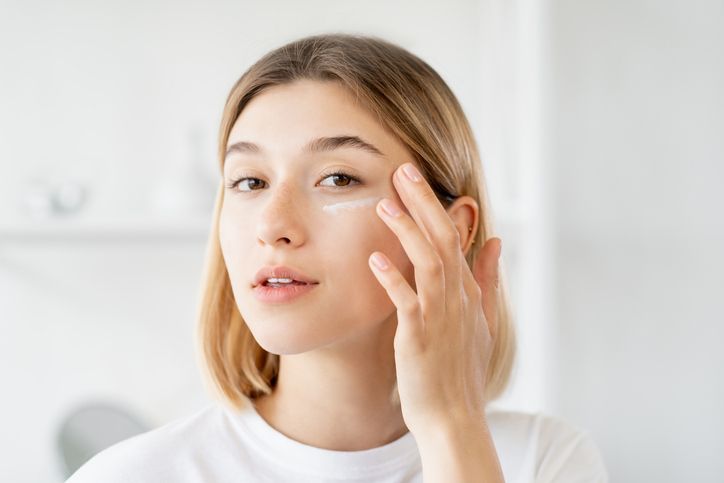
After making sure your dark marks are not of medical concern, you might want to treat them for aesthetic purposes. Although all the following methods are essential in halting the spread, only cosmetic procedures can treat hyperpigmentation thoroughly.
Hydrate Your Skin
Hydration speeds up the metabolism, which slows down your aging process. With a good metabolism rate, your body can flush out excess melanin and lighten dark patches, giving you that radiant and glowy look. Moreover, hydration helps grow new collagen and renew skin cells, clearing and plumping your skin.
Besides drinking 8 glasses of water daily, you should also maintain a hydrating skincare routine. To do so, apply serum and creams with hyaluronic acid, the primary source of hydration in skin care products. You should also use hydrating face masks twice to thrice per week.
Hydration can improve lackbuster skin tone and mild post-inflammatory hyperpigmentation (i.e., acne marks and minor cuts). However, the dark marks will need more assertive measures.
Up Your Sun Protection Game
Sun's rays increase melanin production, resulting in darkened lesions. Harmful UV rays also cause sun damage, harming the skin cells and collagen, and aging up your skin.
Most importantly, excessive sun exposure puts you at risk of melanoma, the deadly skin cancer.
To improve your sun protection factor, you should use a high-quality, broad-spectrum sunscreen with at least 5% zinc oxide—a chemical that physically blocks and reflects UV rays. Alternatively, sunscreens with titanium dioxide are slightly less effective in stopping the longer UV rays from sun exposure.
You can also wear a wide-brimmed hat, sunglasses, or an umbrella to protect your skin exposed to the sun.
Use Topical Creams
Scientific research shows that skin lightening products anti-aging and skin-lightening ingredients such as vitamin c and retinoids can reduce melanin pigments. Other brightening agents include licorice extract and kojic acid.
While brightening agents are trial-and-tested, excessive dosage or sensitive skin may lead to itchiness, swollen skin, rash, or pain.
Face-lightening remedies with natural ingredients, such as lemon juice, avocado oil, milk, and potato juice, are not research-backed. Adverse effects are also possible.
Over-the-counter skin creams cannot reduce deep, dark marks and scars. Instead, you should consider getting a prescription hydroquinone cream from your dermatologist. However, hydroquinone is a harsh chemical that may weaken the skin and cause severe rashes and bleeding.
Consider Cosmetic procedures
Cosmetic treatments are most efficient for those with stubborn, dark, or inherited pigmentations.
Microdermabrasion is the physical exfoliation of the dead skin cells at the outermost skin layer, while chemical peels dissolve the outer skin layer with AHA/BHA solvents.
Both microdermabrasion and chemical peels are scientifically proven ways of reducing the appearance of pigmented lesions. However, they can be slow, make the skin more sensitive, and lead to severe skin damage and other adverse reactions.
Laser t
Laser treatment is the most powerful and targeted hyperpigmentation removal method to date. The laser energy can penetrate your skin layers and reach melanin sites. Since melanin is sensitive to light, it will absorb the laser energy that is intense enough to break down the melanin. A successful laser appointment can fade dark spots timely and effectively.
However, traditional laser technology can bring post-inflammatory hyperpigmentation, aka rebound hyperpigmentation. Traditional laser technology produces longer-pulse lasers which travel slowly. The lasers take too much time going from the outer skin layers to the pigmented lesion, allowing the laser energy to burn the skin tissues, darkening the "treated" area with scars.
Luckily, the latest laser technology, called picosecond laser, can emit ultra-short pulsed laser energy traveling as fast as one trillionth of a second! These ultrafast pico lasers zap through and hit the underlying melanin so fast that there's no chance of burning the skin! Picosecond lasers hit melanin sites so quickly and powerfully that all your pigmentations go away in no time!
Read More

7
Make Your First Pigmentation Treatment the Only One You Need: The Most Comprehensive Laser Therapy!
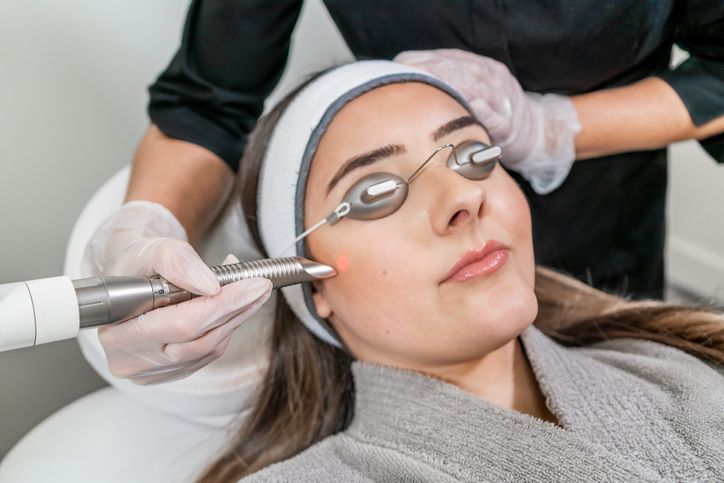
Here at New Beauty, we help you achieve flawless skin with the most advanced medical beauty treatments.
For example, Our renowned PicoCure Pigmentation Removal Treatment uses 4 laser wavelengths to shatter your pigmented lesions of all sizes, shades, and depths. Our state-of-the-art laser technology emits energy that travels 1000 times faster than a traditional laser! As a result, picoCure laser can destroy melanin precisely and instantly, giving you a painless and timely laser removal experience. With as few as 3 sessions, you can see your dark marks disappear, leaving you with clear, plumped, youthful skin!
Do you want to try our top-rated technology and expertise for free? Then sign up for a free trial of New Beauty PicoCure Pigmentation Removal Treatment, completed with a free skin analysis!
FAQ
How is the picosecond laser better than the traditional lasers?
Picosecond laser energy is faster than traditional lasers—about 1000 times faster! As faster punches hit the hardest, pico lasers can instantly hit and shatter melanin accumulations!
How unique is PicoCure Pigmentation Removal Treatment compared to other picosecond laser treatments?
Different dark spots require different laser wavelengths for complete removal. Most pico treatments offer 1 to 2 laser wavelengths. New Beauty's PicoCure is an innovative, 4-wavelength treatment. Our wide variety of wavelengths can reach your dark spots on each skin layer. PicoCure ensures no spot on your face is left untreated.
Should I undergo PicoCure Pigmentation Removal Treatment for my pigmented spots?
PicoCure's revolutionary 4-wavelength technology can get rid of dark spots of most sizes, colors, shades, and depths. PicoCure is a painless and non-irritating treatment for sensitive skin. Those with dull skin tone and loose skin can also benefit from PicoCure. However, people with cancer moles or other medical-related spots should seek medical help instead.
When will I see the results of PicoCure Pigmentation Removal Treatment?
PicoCure works incredibly fast: you can see improvement of the lighter acne marks or freckles with as few as 3 sessions! See fading dark spots will see significant results in about 6 to 12 sessions.
Do I have to worry about rebound hyperpigmentation with PicoCure Pigmentation Removal Treatment?
Don't worry; PicoCure brings no skin damage! PicoCure's ultra-short pulsed pico laser beams hit and break down melanin lesions instantly, leaving no chance for the thermal energy to linger and burn your skin tissues. Enjoy flawless and radiant skin safely!

Book Now to Experience
PicoCure Pigmentation Removal Treatment
1 Minute Self-Registration
Date should not be before minimal date
Recommended Articles
COPYRIGHT© NEW BEAUTY MANAGEMENT LIMITED 2025. ALL RIGHT RESERVED.

